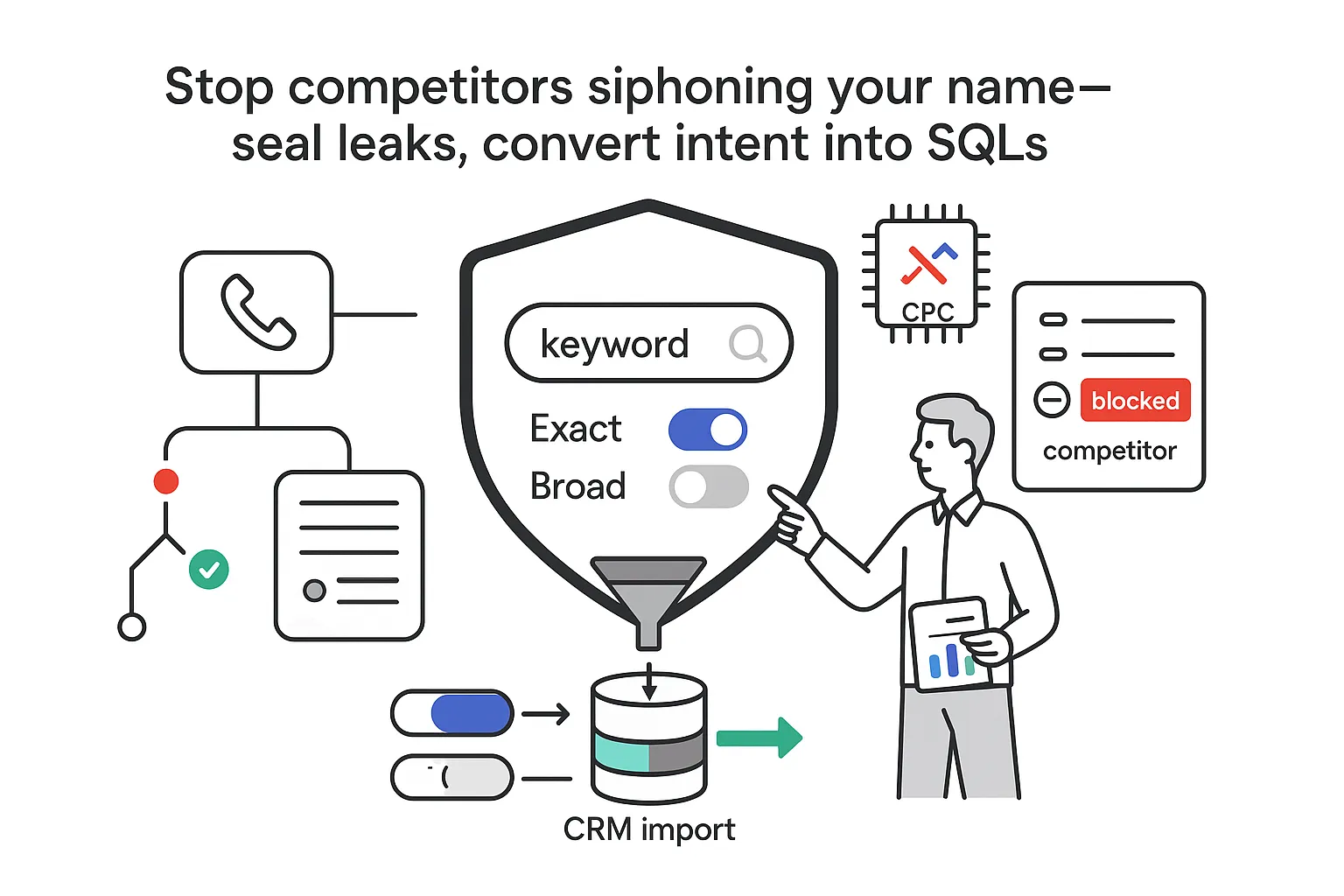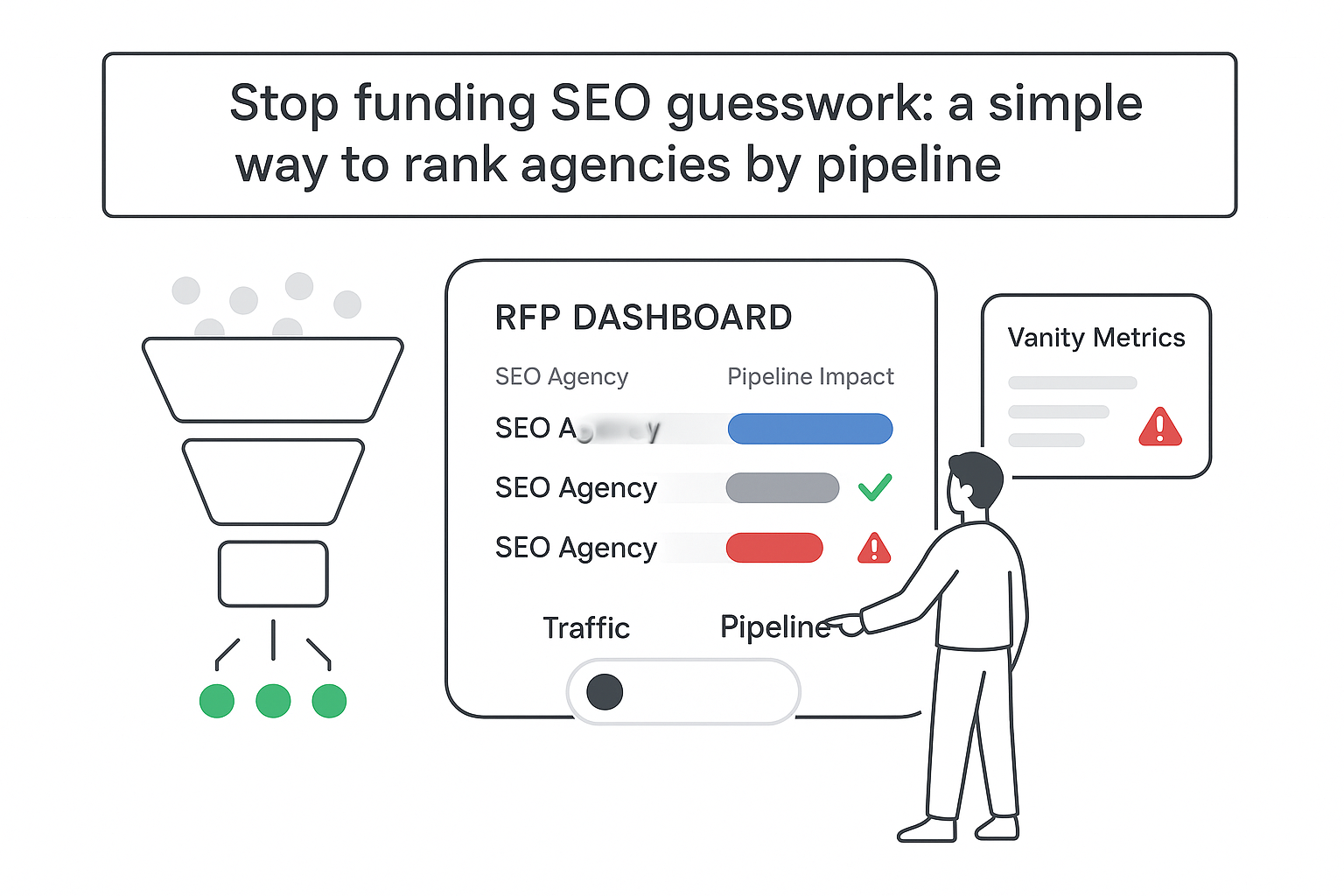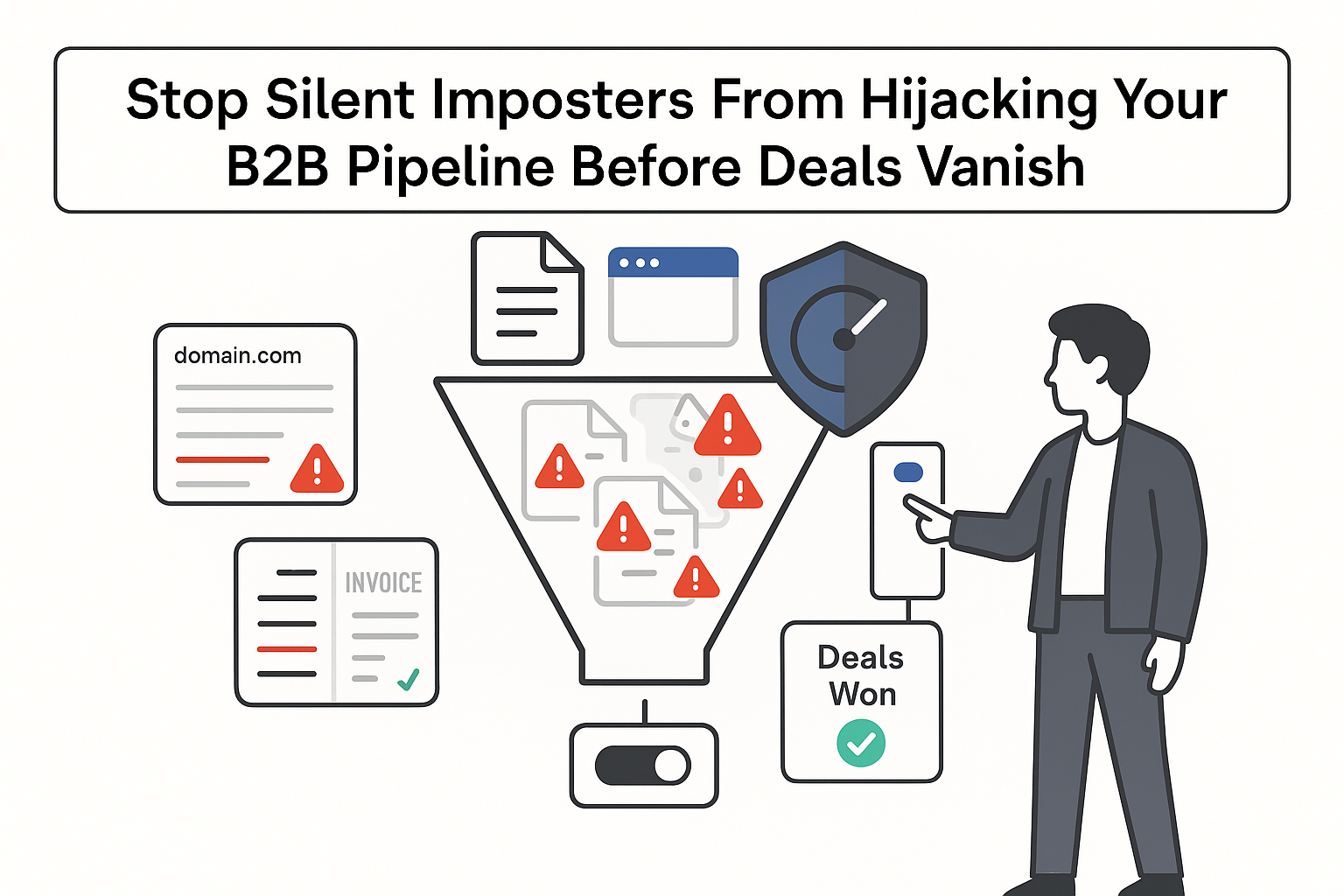I see it every week inside B2B accounts: competitors on brand terms, calls routed to the wrong place, and a slow bleed of opportunity. The fix is straightforward and pays back fast. Brand search is where control lives. Done right, it protects pipeline, boosts close rates, and keeps costs sane.
Brand search campaigns best practices
- Separate brand vs non‑brand into different Search campaigns for clean budgets, bidding, and reporting. Add exact‑match brand negatives to non‑brand so budgets don’t get polluted.
- On brand, aim for 95–100 percent Search Impression Share and over 80 percent Absolute Top Impression Share. Defend the top while watching for CPC spikes - there’s a point of diminishing returns.
- Run at least one responsive search ad (RSA) per ad group with Ad Strength rated Excellent. Include 10 to 15 unique headlines and 4 descriptions. Ad Strength is a setup proxy, not a performance KPI, but it helps coverage and variety. See Google’s guidance: Responsive Search Ads: A Guide to Writing Ads that Perform.
- Use aggressive asset coverage: sitelinks, call, callouts, structured snippets, image assets, and the business name and logo.
- Add negative keywords to filter junk and support requests. Start with terms like jobs, careers, login, support, free, coupon, DIY, training, internship, pdf, definition, wiki, indeed, glassdoor, hours, address.
- Track conversions end‑to‑end with phone call tracking and CRM offline conversion import. Use unique forwarding numbers per ad group when allowed, and import qualified stages (SQL, opportunity) so bidding learns what sales actually cares about.
- Mine search terms weekly. Keep what drives pipeline; block what does not.
- Watch Auction Insights. If rivals push, increase your Target Impression Share on brand or tighten copy and bids to protect Absolute Top.
- Keep landing pages aligned with intent (pricing, case studies, consultation) to preserve Quality Score and speed to SQL.
In my experience - and in Google Ads Help - lifting RSA Ad Strength from Poor to Excellent often correlates with conversion lift. Adding at least four unique image assets and showing your business name and logo also correlates with higher conversions at similar cost. Correlation isn’t causation, but the system consistently rewards complete, high‑quality ads. For specifics, review Responsive Search Ads: A Guide to Writing Ads that Perform.
Trademark note: trademark protection in search advertising matters. File your mark with Google Ads and Microsoft Advertising, enforce misuse in ad text, and keep an eye on brand use in Auction Insights. If needed, submit a violation report. This isn’t legal advice, but I treat it as guarding both your name and your close rate.
A quick clarity point because it comes up constantly: brand vs non‑brand is not either/or. I prioritize brand defense first if competitors are bidding, if brand CPL is below non‑brand, or if the brand funnel is where sales velocity lives. Non‑brand fuels new demand; brand catches buyers who are ready now.
KPIs that keep everyone honest
- Brand CPC trend and Quality Score by keyword. Aim for 9 to 10.
- Search Lost IS (budget). Keep it under 5 percent on brand.
- Absolute Top IS on brand over 80 percent.
- Brand conversion rate vs non‑brand, plus cost per lead.
- Qualified lead rate from CRM, not just form fills.
- Incrementality from geo/time holdouts: calls, consultations, pipeline, revenue deltas.
What are branded search ads?
Branded search ads trigger when people search your company name, product or service names, common misspellings, and brand plus service queries. Think tiers of intent:
- Pure brand: Acme Consulting
- Brand plus service: Acme SEO services
- Brand plus competitor: Acme vs X
Why run them if you already rank first organically? Control. A paid listing can lock the top position, frame the message, and route clicks to high‑intent pages like pricing, case studies, or book a consultation. It also lets you qualify traffic in the ad itself - for example by calling out B2B only, enterprise focus, or minimum engagement levels.
Incrementality matters, and it’s testable. I run geo or time‑based holdouts for a clean slice of traffic (10–20 percent of regions or time blocks for 2–4 weeks), then compare clicks, calls, meetings booked, and revenue between exposed and holdout groups while controlling for seasonality. In most B2B service accounts I’ve worked in, branded ads increase calls and booked consultations while protecting against competitor poaching. Expect some cannibalization of organic; the question is whether the net lift in qualified demand and the defensive value justify the CPCs. Test it.
For longer sales cycles, brand queries often carry higher lead quality because they reach people who already know you or were referred. That usually means faster sales activation and better offline conversion capture, especially for phone calls and scheduled consultations. Google’s Search Ads Pause Studies and Nielsen research have reported meaningful lifts when ads occupy the top position, including gains in awareness, incremental clicks, and offline sales - effects vary by category, so validate in your own data.
Benefits of branded search campaigns
- SERP control and competitor defense at the exact moment buyers search your name.
- Lower CPCs than non‑brand in many markets.
- Higher CTR and stronger Quality Scores, which keep costs down.
- Higher conversion rates and lower CPA, thanks to higher intent.
- Offline conversion lift, including direct calls and booked meetings.
- Message control via sitelinks to pricing, case studies, consultations, or security and compliance pages.
- Built‑in qualification with ad text like B2B only, For enterprises, or Minimum engagement 25k.
Data callout: in typical B2B accounts I manage, brand CPCs are often 60 to 90 percent lower than non‑brand, and CTRs can be 2 to 5 times higher. Benchmarks vary; verify with your own reporting.
Google Ads brand campaign structure
Keep it simple and accountable.
Campaigns and ad groups
- One Search campaign named Brand.
- Ad groups by intent or theme:
- Core Brand, including your brand only and common misspellings.
- Brand plus Services, grouped by service line.
- Optional Brand plus Questions, like pricing, reviews, or security.
Audiences
- Add Customer Match, site visitors, and competitor‑focused custom segments in Observation for insights. Do not restrict. Use the data to inform copy and budgets.
Settings
- Network: Search only. Exclude Search Partners for maximum control; test partners later if needed.
- Locations: target only your service areas. Exclude regions that cannot buy from you.
- Ad rotation: Optimize. If you test multiple RSAs, evaluate at the ad group level - not only ad‑level CTR.
Bidding
- Start with Target Impression Share on Absolute top at 90 to 100 percent and set a sensible CPC cap. That locks defense.
- Once tracking is clean and volume is stable, test Max Conversions or Target CPA. Monitor Absolute Top IS; if it slips, adjust budgets and ad rank or revert to Impression Share. Brand should never go dark.
- Avoid broad match on brand at launch. Use exact in Core Brand and phrase in Brand plus Services for controlled reach.
Required assets
- One RSA per ad group to start; once volume supports it, test up to 2–3 variants. Shoot for Excellent Ad Strength with 10 to 15 unique headlines and 4 descriptions. See: Responsive Search Ads: A Guide to Writing Ads that Perform.
- Sitelinks: Pricing or Packages, Case Studies, Consultation, About/Trust.
- Call asset synced to business hours. Add call recording and forwarding if your industry permits it.
- Structured snippets with services or industries served.
- Callouts with proof points, for example 150 plus case studies or SOC 2 Type II.
- Image assets, at least four unique sizes and crops.
- Business name and logo. Google has noted lift when these are present.
Brand search query monitoring and optimization
Run a weekly review:
- Check the Search Terms report. Add winners as exact, and exclude junk with the right match type.
- Check Auction Insights. If a new competitor appears, tighten Ad Rank and adjust bids.
- Watch Lost IS (budget) and keep it under 5 percent.
- Align call asset schedule with staffing and missed‑call alerts.
- Log changes for accountability and trend analysis.
This structure aligns with Google’s guidance on creating effective RSAs and optimizing as you build. Intent‑based grouping keeps data clean and actions clear.
Exact match strategy for brand terms
Exact match is your steering wheel. Build exact match for your core brand, frequent misspellings, and the highest‑intent brand plus service variants that need unique routing or copy. Pin the brand in Headline 1 for clarity and compliance, then use paths that mirror intent, like services or pricing. Maintain bid floors that keep Absolute Top IS above 80 percent, and watch Quality Score by keyword. Aim for 9 to 10.
Use phrase match only where you need controlled expansion in the Brand plus Services ad group. Avoid broad match for brand unless it’s isolated with heavy negatives and conservative bids. It’s rarely needed.
Negative keywords for brand campaigns
Start with a campaign‑level list made for B2B. Group by theme so updates are easy:
- Careers and recruiting: jobs, careers, salary, internship, graduate, hiring, interview.
- Support and portals: login, portal, dashboard, support, phone number, address, hours.
- Price shoppers, bargain terms: free, cheap, coupon, promo, discount.
- Low‑intent info seekers: definition, meaning, wiki, pdf, template.
- Third‑party employment sites: glassdoor, indeed, linkedin.
Add exclusions for non‑target industries or locations if you see drift. Mine Search Terms weekly, add negatives with the right match types, and log changes for accountability. Don’t block comparison terms that show commercial intent, such as vs or alternatives. If volume warrants, route them to a comparison‑focused ad group with copy that highlights strengths calmly and factually.
Brand campaign budget allocation
As a baseline, allocate 5 to 20 percent of total paid search spend to brand. Adjust to hold 95 to 100 percent Impression Share and under 5 percent Lost IS (budget). If calls are a priority, weight spend to business hours, and make sure your call asset schedule matches your sales team. During competitor pushes or product launches, increase the brand budget and raise your Target Impression Share to lock the absolute top.
Use shared budgets only if brand consistently over‑paces or sits underutilized. Otherwise, keep a dedicated budget for clean attribution. Report weekly on brand spend share, cost per lead, and pipeline contribution using your CRM’s offline revenue data.
Tie this to your branded keywords bidding strategy. On defense, keep CPC caps aligned with margin and lifetime value, not just last‑click CPA. Automated bidding can work well once you have stable conversion tracking and enough volume, but always monitor Impression Share so your name stays visible.
Brand search ad copy best practices
I follow Google’s playbook, but I write like a human selling to a busy buyer.
Structure
- Pin the brand in Headline 1 to make the listing unmistakable.
- Mix UVP, proof, and a clear next step in the other headlines. For example: B2B SEO That Scales, 150 plus Case Studies, Book a 15‑Min Consult.
- Qualify the audience when it helps lead quality. For B2B Service Firms, Enterprise Ready, or Minimum engagement 25k.
- Use sitelinks to guide high intent: Pricing, Case Studies, Security and Compliance, Consultation.
- Add a call asset and a lead form extension if you use them, backed by quick follow‑up SLAs.
Assets matter. Google’s data shows that adding at least four unique image assets and showing your business name and logo can lift conversions at a similar cost. Include structured snippets with services or industries, and callouts with concise proof points. Use all asset types that make sense for your sales process.
Creative depth
- Build 10 to 15 unique headlines and 4 descriptions. Vary length and angle, then let the system test combinations.
- Aim for Excellent Ad Strength. The indicator helps you spot repetition and limited variety.
- Test 2 to 3 RSA variants per ad group once volume allows. Rotate value props (e.g., strategy call, benchmark report) and measure incremental consultations and SQLs.
- Use dynamic keyword insertion sparingly on brand. Over‑repeating your name can look odd.
Compliance and trust
- Respect trademark rules for your brand and others. Include your legal name when required, and avoid unapproved competitor references.
- Add authority language where it matters - certifications, security frameworks - and link to proof on site.
Testing and measurement
- Try ad variations to compare headline angles. Evaluate success by incremental impressions, clicks, and conversions at the ad group level, not just ad‑level CTR.
- In the campaign builder, resolve any setup alerts in targeting, bidding, or budget. Small tweaks there prevent performance loss.
You might worry that tighter, qualifying ad copy will reduce clicks. It might - and that’s a good thing. Fewer, better clicks usually means more meetings and lower cost per qualified lead.
Final thought for operators who want accountability without micromanaging: brand search is my control channel. I keep it clean, keep it measured, and use it to stabilize pipeline while non‑brand and content play the longer game.







.svg)